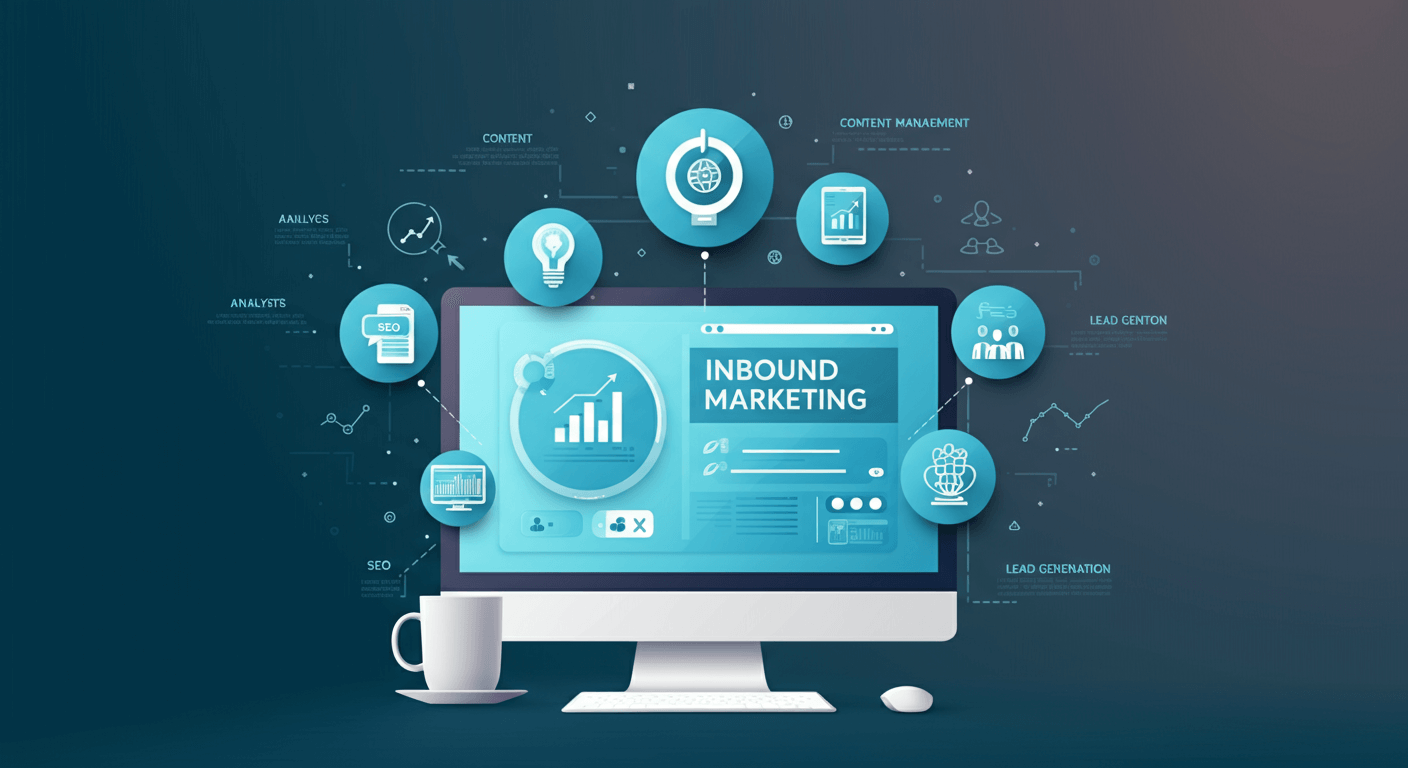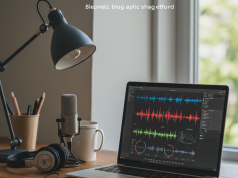Marketing has evolved dramatically over the past decade. Gone are the days when businesses could rely solely on cold calls, banner ads, and mass email blasts to capture customer attention. Modern consumers are savvy, selective, and skeptical of traditional advertising methods. They want valuable content, personalized experiences, and solutions to their specific problems.
This shift has made inbound marketing essential for businesses of all sizes. Rather than interrupting potential customers with unwanted messages, inbound marketing attracts them by providing helpful, relevant content at exactly the right moment. The strategy works because it aligns with how people actually make purchasing decisions—by researching, comparing options, and seeking trusted advice.
However, executing an effective inbound marketing strategy requires the right technology stack. Without proper tools, even the most well-intentioned marketing efforts can fall flat. You need systems to create compelling content, optimize for search engines, nurture leads through email sequences, analyze visitor behavior, and measure ROI across multiple channels.
The good news? There’s never been a better selection of inbound marketing tools available. From all-in-one platforms to specialized solutions, marketers can choose from hundreds of options to build their ideal tech stack. This guide will help you understand the essential categories of inbound marketing tools, evaluate the best options in each category, and create a system that drives real business results.
What Is an Inbound Marketing Tool?

An inbound marketing tool is any software or platform that helps businesses attract, engage, and delight customers through valuable content and experiences. Unlike outbound marketing tools that focus on pushing messages to broad audiences, inbound marketing tools are designed to pull qualified prospects toward your business naturally.
These tools typically focus on four key areas: attracting visitors to your website, converting visitors into leads, closing leads into customers, and delighting customers into promoters. The best inbound marketing tools integrate seamlessly with each other, creating a cohesive system that guides prospects through every stage of the buyer’s journey.
Modern inbound marketing tools leverage data and automation to personalize experiences at scale. They track visitor behavior, segment audiences based on interests and actions, and deliver targeted content that moves prospects closer to a purchase decision. This data-driven approach allows businesses to optimize their marketing efforts continuously and achieve better results with less manual effort.
Essential Categories of Inbound Marketing Tools
Content Management Systems
Your website serves as the foundation of your inbound marketing strategy. A robust content management system (CMS) makes it easy to create, publish, and optimize content that attracts your target audience. The best CMS platforms offer built-in SEO features, mobile responsiveness, and integration capabilities with other marketing tools.
WordPress remains the most popular choice, powering over 40% of all websites worldwide. Its flexibility, extensive plugin ecosystem, and SEO-friendly structure make it ideal for content-driven marketing strategies. HubSpot CMS offers a more integrated approach, combining content management with marketing automation and CRM functionality in a single platform.
For businesses prioritizing page speed and developer experience, headless CMS solutions like Contentful or Strapi provide excellent performance while maintaining content management flexibility.
Search Engine Optimization Tools
SEO forms the backbone of successful inbound marketing. These tools help you research keywords, optimize content, track rankings, and identify technical issues that might prevent search engines from properly indexing your site.
SEMrush and Ahrefs lead the premium SEO tool category, offering comprehensive keyword research, competitor analysis, and site auditing features. For businesses with smaller budgets, tools like Ubersuggest or Moz provide many of the same capabilities at more affordable price points.
Google Search Console and Google Analytics remain essential free tools that every inbound marketer should use. They provide direct insights from Google about your website’s search performance and user behavior.
Email Marketing Platforms
Email marketing generates an average ROI of $42 for every dollar spent, making it one of the most effective inbound marketing channels. Modern email marketing tools go far beyond simple newsletters, offering sophisticated automation, segmentation, and personalization capabilities.
Mailchimp dominates the small business market with its user-friendly interface and generous free plan. ConvertKit appeals to content creators and online educators with features designed specifically for selling digital products and courses. For enterprise businesses, platforms like Marketo or Pardot provide advanced lead scoring, account-based marketing features, and deep CRM integration.
Social Media Management Tools
Social media amplifies your content’s reach and provides valuable channels for engaging directly with your audience. Social media management tools help you schedule posts, monitor mentions, analyze performance, and manage multiple accounts from a single dashboard.
Hootsuite and Buffer are popular choices for small to medium businesses, offering intuitive scheduling interfaces and basic analytics. Sprout Social provides more advanced features like social listening and detailed competitor analysis. For businesses focused primarily on visual content, Later specializes in Instagram, Pinterest, and other image-centric platforms.
Marketing Automation Platforms
Marketing automation tools nurture leads through personalized email sequences, score prospects based on their behavior, and trigger targeted campaigns based on specific actions. These platforms bridge the gap between marketing and sales by ensuring qualified leads receive the right message at the right time.
HubSpot offers one of the most comprehensive marketing automation platforms, combining CRM, email marketing, social media management, and analytics in a single ecosystem. ActiveCampaign provides powerful automation features at a more affordable price point, while Marketo and Pardot cater to enterprise businesses with complex, multi-touch attribution needs.
Analytics and Reporting Tools
Data drives successful inbound marketing strategies. Analytics tools help you understand which content resonates with your audience, which channels drive the highest-quality traffic, and where prospects drop off in your conversion funnel.
Google Analytics remains the gold standard for website analytics, providing detailed insights into visitor behavior, traffic sources, and conversion paths. For businesses wanting more privacy-focused analytics, tools like Plausible or Fathom offer simpler, GDPR-compliant alternatives.
Specialized tools like Hotjar provide heat mapping and session recording capabilities that reveal how users interact with your website pages. This behavioral data often uncovers optimization opportunities that traditional analytics miss.
How to Choose the Right Inbound Marketing Tool Stack
Selecting the right combination of inbound marketing tools requires careful consideration of your business goals, budget, team size, and technical requirements. Start by auditing your current marketing processes and identifying the biggest gaps or inefficiencies.
Budget plays a crucial role in tool selection, but don’t automatically choose the cheapest option. Consider the total cost of ownership, including setup time, training requirements, and potential integration costs. Sometimes investing in a more expensive, all-in-one platform actually costs less than maintaining multiple point solutions.
Integration capabilities should be a top priority. Your tools need to share data seamlessly to create a complete picture of your customer journey. Look for platforms that offer robust APIs, native integrations with your existing tools, or work well with integration platforms like Zapier.
Consider your team’s technical expertise when evaluating tools. A platform with advanced features won’t deliver results if your team struggles to use it effectively. Many tool vendors offer free trials or demos—take advantage of these opportunities to test usability before committing.
Scalability matters, especially for growing businesses. Choose tools that can accommodate increased traffic, larger contact databases, and more sophisticated marketing campaigns without requiring a complete platform migration.
Maximizing ROI from Your Inbound Marketing Tools

Investing in the right tools is only the first step. To maximize your return on investment, you need to implement them strategically and continuously optimize their performance.
Start with proper setup and configuration. Take time to configure tracking properly, set up automation workflows, and integrate your tools with each other. Poor initial setup often leads to data silos, missed opportunities, and inefficient workflows that persist for months or years.
Invest in team training and education. Most marketing tools offer extensive documentation, webinars, and certification programs. Encourage your team to become power users rather than just scratching the surface of each platform’s capabilities.
Regular audits and optimization keep your tool stack performing at its best. Review your analytics monthly to identify underperforming campaigns, outdated content, or technical issues. A/B test different approaches and double down on what works best for your audience.
Don’t neglect data hygiene. Clean, accurate data is essential for effective marketing automation and personalization. Regularly remove inactive contacts, update contact information, and ensure your segmentation criteria remain relevant.
Building Your Inbound Marketing Success Story
The most successful inbound marketing strategies combine the right tools with compelling content, strategic thinking, and continuous optimization. While tools provide the infrastructure for success, they’re only as effective as the strategy behind them.
Focus on creating genuine value for your audience rather than just promoting your products or services. The best inbound marketing tools amplify great content and meaningful interactions—they can’t transform poor content into marketing gold.
Remember that inbound marketing is a long-term strategy. Unlike paid advertising that can generate immediate results, inbound marketing builds momentum over time. Consistency in content creation, optimization, and audience engagement ultimately drives the best results.
Start with a solid foundation of essential tools, master their core features, and gradually expand your stack as your needs grow. This approach prevents tool overload while ensuring you’re getting maximum value from each platform you invest in.
The inbound marketing tool landscape will continue evolving as new technologies emerge and customer expectations shift. Stay curious, keep testing new approaches, and always prioritize your audience’s needs over the latest marketing trends. With the right tools and strategy, inbound marketing can become your most effective and efficient customer acquisition channel.




